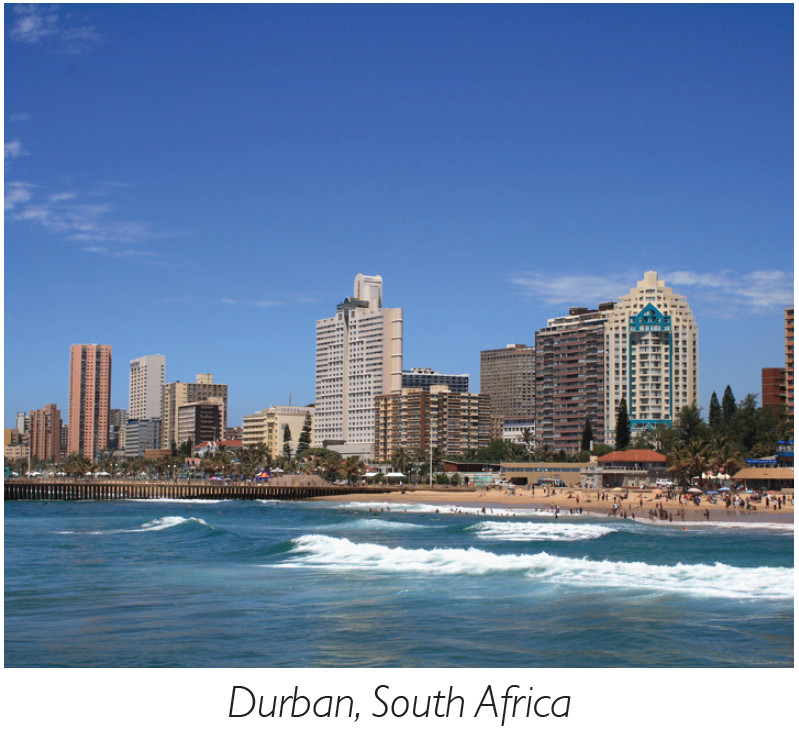Borrower Overview
TriLinc has provided financing to a farm supplies wholesaler in South Africa. Established in 2004, the borrower imports, produces, and distributes various high quality fertilizers and animal feed raw materials for the South African agricultural sector. The borrower aims to support farming communities by providing agricultural products in a timely manner, facilitating cost savings, reducing risk in the supply chain, and pursuing higher crop yields. The borrower also offers a transport/logistics service to its customers to increase reliability and minimize costly delays in bringing goods to market, especially during peak seasons. TriLinc’s financing provides the borrower with timely and flexible short-term liquidity for the import of granular urea, the most popular and fastest growing nitrogen-based fertilizer in the global marketplace. The borrower anticipates that the fertilizer it distributes to local farmers will support the borrower’s objective to increase agricultural productivity and food security throughout South Africa.
Market Overview

South Africa is classified as an upper-middle income country by the World Bank1 and is the only African country to have hosted the World Cup to date. Between 2010 and 2014, annual GDP growth rates averaged approximately 2.4%.1 South Africa’s main exports have traditionally been concentrated in gold, diamonds, platinum, other metals and minerals, and machinery and equipment.2 Conversely, the country’s main imports have been focused in machinery and equipment, chemicals, petroleum products, scientific instruments, and foodstuffs.2
South Africa meets TriLinc’s country standards for its performance across relevant growth, stability, and access metrics.3 In 2015, it ranked fourth in the Sub-Saharan African region on the World Bank’s Ease of Doing Business index.4 As the second largest economy in Sub-Saharan Africa,5 the country benefitted from the $37 billion in net foreign direct investment that was estimated to have flowed into the region in 2014.6 Robust domestic demand across Sub-Saharan Africa helped spur GDP growth to 4.6% in 2014.7 Looking ahead, overall regional GDP growth is projected to strengthen to 5% by 2017.7
Additional Sustainability & Impact Highlights
- The borrower provides its customers with tailored agricultural advice based on findings from its research and development initiatives with crop scientists, soil scientists, and plant breeders on issues related to different plant varieties, irrigation techniques, and crop diseases, among other technical issues.
- The borrower’s Durban-based office is located in a mixed-use green building that was built to operate with minimal negative impact on the environment.
- As a responsible corporate citizen, the borrower is actively involved in supporting local community development organizations, such as a shelter for mistreated women.
1The World Bank, World Development Indicators Database, South Africa, 2015. 2CIA, The World Factbook, 2015: South Africa. 3There is no assurance that our investment in this company or this market will be successful. 4The World Bank, Doing Business 2016, Measuring Regulatory Quality and Efficiency, 2015. 5The World Bank, World Development Indicators Database, 2015. 6The World Bank, Data, Sub-Saharan Africa, 2015. 7The World Bank, Global Economic Prospects, June 2015.
The above information is as of the initial date of investment: May 28, 2015.
This borrower is no longer a TriLinc fund investment.
TriLinc originally performed an SDG mapping exercise in December 2017 to map all of our borrower companies, both current and exited from our portfolios, to specific SDGs based off of business activity. TriLinc’s official SDG alignment methodology was not finalized until June 30, 2018. For borrowers that had exited TriLinc’s portfolios prior to this time period, the selected SDGs for these borrower are a reflection of what TriLinc believes would have been the SDG alignment if 1) the SDGs had been in effect and 2) TriLinc had integrated the SDG alignment while the company was in the portfolio. The SDG mapping presented does not include input from Investment Partners or borrower companies given that the companies were no longer in the portfolio when the alignment was finalized.
An investment with TriLinc carries significant fees and charges that will have an impact on investment returns. Information regarding the terms of the investment is available by contacting TriLinc. This is a speculative security and, as such, involves a high degree of risk. Investments are not bank guaranteed, not FDIC insured and may lose value or total value. Some investments may have been made in an investment vehicle that is no longer open for investment. The highlighted investment may or may not have been profitable. There is no guarantee that future investments will be similar.
Want to learn more? Contact Us.
